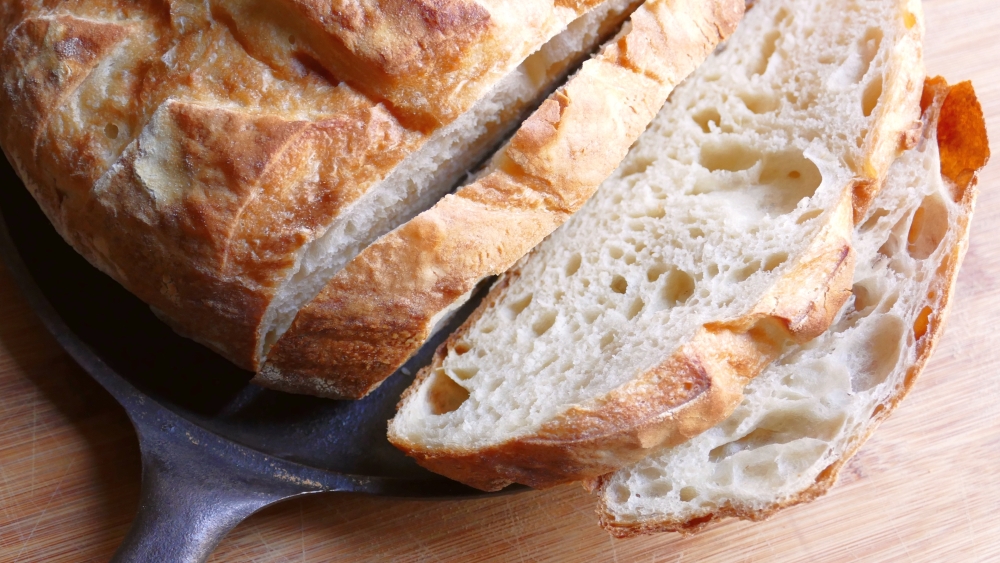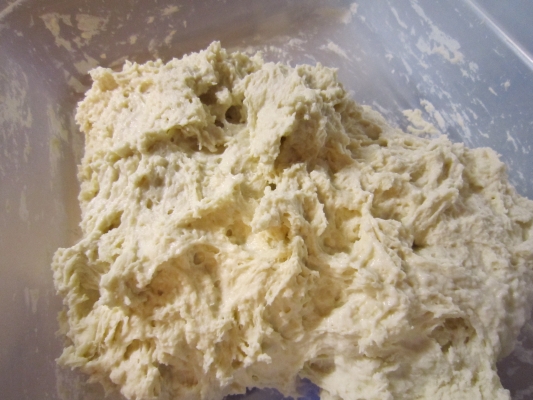Scalding Milk for Baking – Is it Necessary?


Is scalding milk for addition to bread dough necessary?
Because of the pasteurization of milk, scalding isn’t as necessary as in the past when only raw milk was available. However, the temperature at which milk is pasteurized (145F/62C for longer times or up to 162F/72C for less time) is lower than the temperature of scalding (180F). With pasteurization, bacteria and enzymes are mostly neutralized and the milk protein is somewhat denatured (changed/broken down).
Milk proteins can weaken gluten in a bread dough and interfere with the rise of the bread, resulting in a denser loaf. Enzymes found in milk and milk proteins can also slow down fermentation. So to be sure that all enzymes are eliminated and proteins are more thoroughly denatured, scalding your milk before adding to dough or using canned milk can improve your outcome.
It is not necessary to add milk to bread, however for some baked goods such as soft skillet bread , rolls and buns , milk is used to improve the softness and flavor of the crumb.
Milk also adds nutrients and can help improve the color of the crust. Using scalded and then cooled milk (or canned milk) is a safer bet when adding milk to your dough. I recommend using the full fat version of milk as the added fat will contribute to the softness of the crumb.
Scalded milk will denature the milk proteins, which can weaken the gluten and prevent the bread from rising properly
It can also liberate peptides, amino acids, and sugars, which the yeast feeds on and can speed up the rate of fermentation if it is added while still warm.
Scalding Milk – How to do it:
To scald milk, add cold milk to a heavy bottomed pan that is high enough to contain the milk in case you allow it to overheat. Overheating milk (boiling) will make it bubble up and rise high in the pan. That can happen very quickly as the milk approaches scalding temperatures.
Heat the milk over a medium heat and stir it while keeping an eye on it. When milk gets close to scalding temperatures, it will begin to bubble around the sides and emit some steam. You’ll also hear a bit of sizzling from where the milk touches the sides of the pan. If you use a temperature probe, you will be able to heat the milk to the right temperature without guessing. Once the milk has reached 180F/82C remove it from the heat source immediately and allow it to cool to 110F/43C before adding it to your dough. If you need to use it quickly, set the hot pan of milk in a basin of cold water (like in your sink).
Try not to allow the milk to come to a boil as that will change the flavor of the milk. If you blow it and it does boil, take it off right away and allow it to cool down. I would use it anyway, it’s not optimum, but it also won’t hurt anything.
If you use condensed canned milk, make sure to obtain the full fatted variety as the low fat condensed milk doesn’t produce as good an outcome. With canned milk, there is no need to process it or heat it further as the canning process will have heated the milk adequately.
Some bakers use non-dairy substitutes for their baking. The nut milks and oat milk are considered to be the best substitutes for bread baking as they are mildly flavored. Since I have not experimented with non-dairy substitutes, I cannot give you first hand advice on how well they work. However I have read that since they do not contain whey protein, there is no need to scald non-dairy substitutes.
To sum up:
- You probably don’t need to scald pasteurized milk, but if you want to be sure your milk doesn’t affect your dough, scald it.
- Use full fat milk for optimum results.
- Bring the milk to 180F/82C and then allow it to cool before using in your baked goods.
- Use a milk substitute if you need to.
Tips:
If you are substituting milk for some of the water in your bread dough formula, using less is better. If you sub all of the water and instead use only milk (milk is only about 90% water), your dough will be a bit heavier, won’t rise as high and take longer to rise. Try 50% water/milk.
When using milk in dough, remember it will need a lower oven temperature for baking.
I will often sub part full fat buttermilk instead of regular milk for my bread dough. I find that buttermilk doesn’t need to be scalded and produces a great outcome (if you try to scald it, it will probably separate into curds). See here for a buttermilk sourdough formula: Buttermilk Sourdough Bread
Teresa
For chopping up those dough inclusions, try this gorgeous Japanese knife. For 20% off, use the code NORTHWESTSOURDOUGH –> SEE HERE


Responses